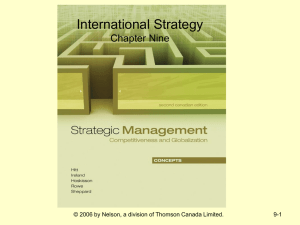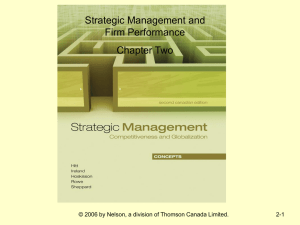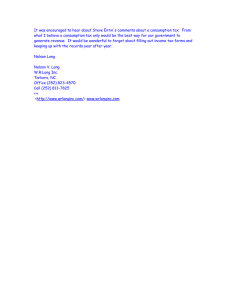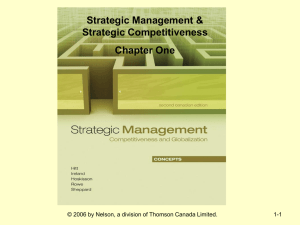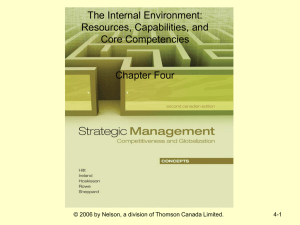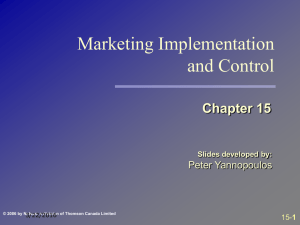International Strategy Chapter Nine 9-1
advertisement
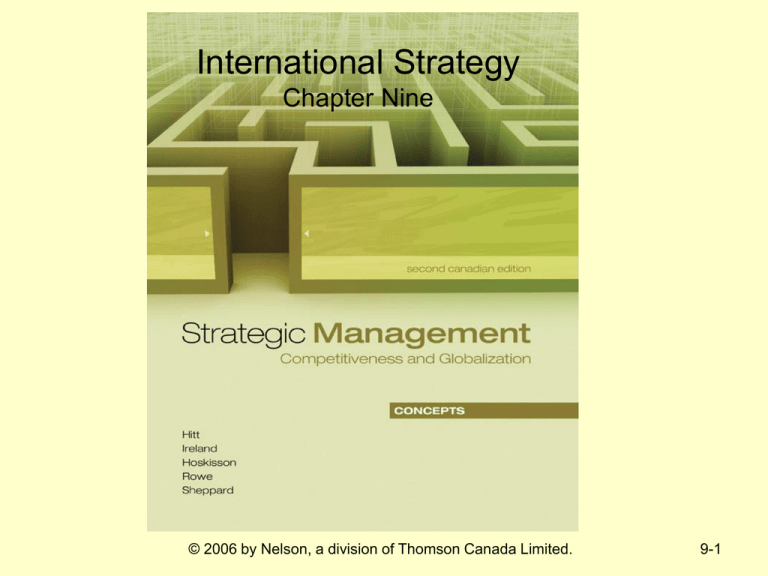
International Strategy Chapter Nine © 2006 by Nelson, a division of Thomson Canada Limited. 9-1 Determinants of National Advantage © 2006 by Nelson, a division of Thomson Canada Limited. 9-2 International Corporate-Level Strategy • Multi-domestic Strategy – Strategic & operating decisions are decentralized to the strategic business unit in each country to tailor products to the local market. • Global Strategy – Assumes more standardization of products across country markets • Transnational Strategy – The firm seeks to achieve both global efficiency and local responsiveness © 2006 by Nelson, a division of Thomson Canada Limited. 9-3 Choice of International Entry Mode Exporting Common way to enter new international markets. No need to establish operations in other nations. Establish distribution channels through contractual relationships. May have high transportation costs. May encounter high import tariffs. May have less control on marketing and distribution. Difficult to customize product. © 2006 by Nelson, a division of Thomson Canada Limited. 9-4 Choice of International Entry Mode Licensing Firm authorizes another firm to manufacture & sell its products Licensing firm is paid a royalty on each unit produced and sold. Licensee takes risks in manufacturing investments. Least risky way to enter a foreign market. Licensing firm loses control over product quality & distribution. Relatively low profit potential. © 2006 by Nelson, a division of Thomson Canada Limited. 9-5 Choice of International Entry Mode Acquisitions Enable firms to make most rapid international expansion. Can be very costly. Legal and regulatory requirements may present barriers to foreign ownership. Usually require complex and costly negotiations. Potentially disparate corporate culture. © 2006 by Nelson, a division of Thomson Canada Limited. 9-6 Choice of International Entry Mode New Wholly-Owned Subsidiary – Greenfield Venture Most costly & complex of entry alternatives. Achieves greatest degree of control. Potentially most profitable, if successful. Maintain control over technology, marketing and distribution. May need to acquire expertise & knowledge that is relevant to host country. Could require hiring host country nationals or consultants at high cost. © 2006 by Nelson, a division of Thomson Canada Limited. 9-7 Major Risks of International Diversification Political Risk National government instability may create potential problems for internationally diversified firms. Potential changes in attitudes or regulations regarding foreign ownership. Legal authority obtained from previous administration may become invalid. Potential for nationalization of firms’ assets. © 2006 by Nelson, a division of Thomson Canada Limited. 9-8 Major Risks of International Diversification Economic Risk Econ. risks are interdependent with political risks. Differences and fluctuations in international currencies may affect value of assets & liabilities. This affects prices & thus ability to compete. Differences in inflation rates may affect internationally diversified firms’ ability to compete. Enforcing intellectual property rights on CDs, software, etc. © 2006 by Nelson, a division of Thomson Canada Limited. 9-9

